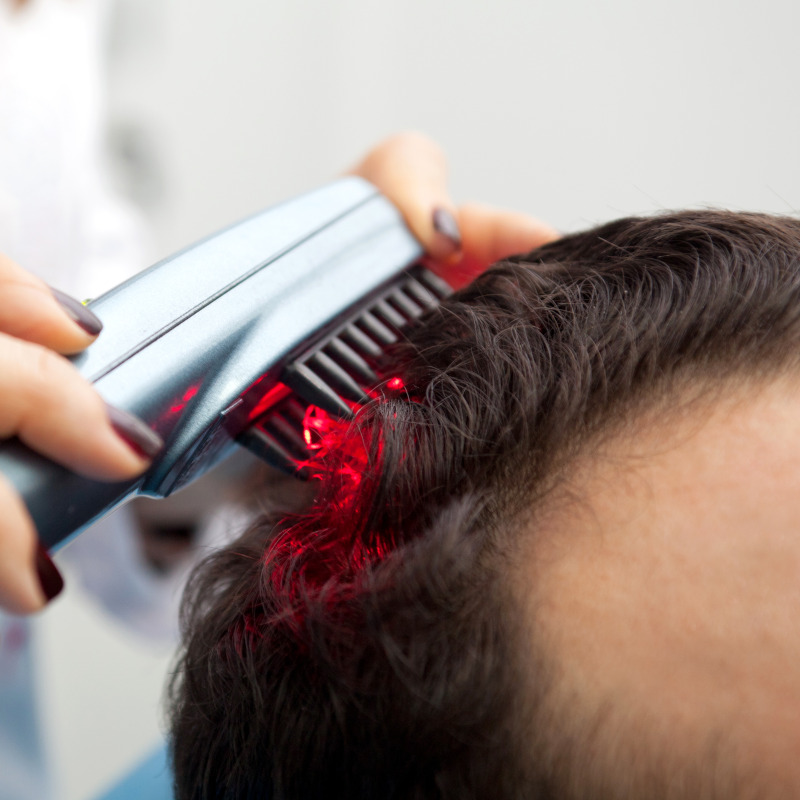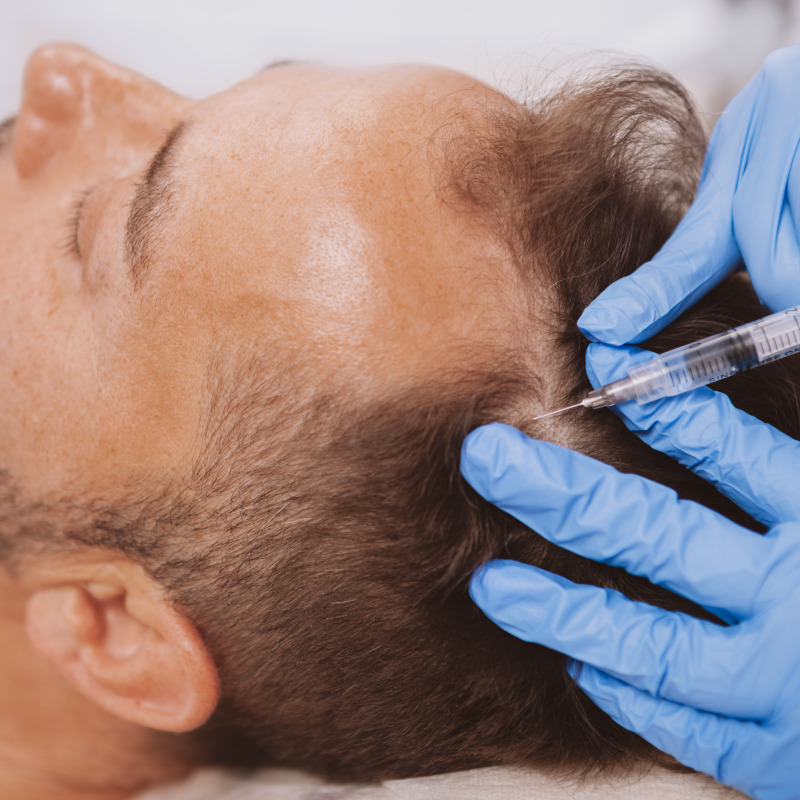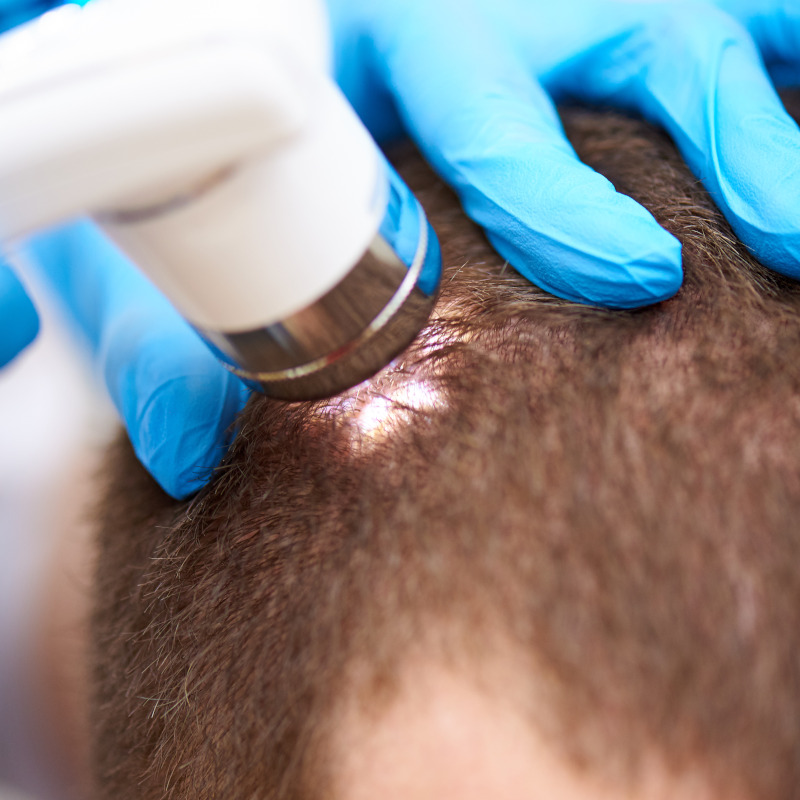What are Hair Transplants?
Common for many men and women, hair loss may feel overwhelming to manage and treat. When nonsurgical treatment methods do not provide your desired results, Dr. Gainers is talented at performing hair transplant techniques called follicular unit transplant (FUT) and follicular unit extraction (FUE). Dr. Gainers enjoys specializing in the treatment of all types of hair loss. Furthermore, she also has specialized knowledge in the treatment of hair disorders among women of African descent. Please schedule an appointment at Madeliene Elaine in Chevy Chase, MD to learn more.
What Are The Benefits Of Hair Transplants?
The benefits of hair transplants include:
- Effective for both women and men
- Results are more dramatic than nonsurgical methods
- Results look natural
- Results are long-lasting
- Increased confidence and boosted self-image
Benefits of FUT:
- Larger grafts can be performed
- Operation time is short
- Surgery costs less
Benefits of FUE:
- No stitches or linear scarring
- Any scarring is virtually invisible
- Hair from different body areas can be used
- Transplant is a quick, in-office procedure
- Little to no pain or discomfort
- Has a high graft survival rate
- Recovery is faster
Hair Transplant Reviews
Am I A Good Candidate for Hair Transplant Surgery?
Both FUT and FUE offer a variety of benefits. Please review both options to learn more about the hair transplant techniques and what may work best for you.
FUT candidates
Dr. Gainers may recommend follicular unit transplantation for men and women with hair loss who prefer a long-term alternative to hair restoration and have enough donor hair to hide present and potential areas of loss. Those who have short hair (less than 1/2 an inch) might not be suitable for this treatment because of the linear scar left on the back of the head. However, to help hide this scar, we offer scalp micropigmentation (SMP), which uses ink to make the scalp look more like your natural hair color.
FUE candidates
You may be a candidate for FUE if you have substantial areas of complete hair loss or thinning hair. Before this procedure, you may have tried nonsurgical treatments, like shampoos, topical medications, platelet-rich plasma (PRP), or low-level laser therapy. Although these treatments can help slow or protect against baldness, they may not fix advanced baldness. FUE can work well for most hair colors, conditions, and textures. During your consultation, Dr. Gainers will assess your scalp and hair to determine if you have enough donor follicles to accomplish your hair goals.
What Is the Difference Between FUT and FUE?
Dr. Gainers has outlined the major differences between the FUT and FUE techniques. Depending on your needs and as discussed in your consultation, Dr. Gainers will design a treatment plan that incorporates one of these hair transplant options.
FUT
The FUT technique takes a thin strip of your hair from the back and/or sides of the scalp where growth is most permanent and not subject to hair loss. The strip of your hair is then broken into tens of thousands of individual follicular hair grafts with microscopic dissection. These separate grafts contain between 1 – 4 hairs. Next, Dr. Gainers places them into tiny sites where the hair is missing. The end results from FUT appear natural and create fuller-looking hair. However, thin linear scarring on the back of the head does occur with this procedure. Often, Dr. Gainers combines scalp micropigmentation (SMP) to conceal the scar and enhance the results.
FUE
Your FUE procedure will be performed at our Chevy Chase, MD office using a local anesthetic on your scalp. Something stronger, like an oral sedative, may be added to keep you calm throughout the procedure. During your consultation, Dr. Gainers will speak with you about what to expect throughout your FUE surgery, such as how much time it will take. Once you are ready, Dr. Gainers along with her staff will start the procedure. During your procedure, you can relax and listen to music or watch TV.
The donor follicles are taken from the back of your head because hair growth here is constant. For medium to large grafts, the back and sides of your scalp might have to be shaved. For smaller cases (less than 1,000 – 1,200 grafts), you may only have to get a little strip of hair shaved that is camouflaged by the hair next to it. Next, Dr. Gainers places the extracted follicular units. The hair removal process is randomized so that the hair around the extracted follicles will grow back and then camouflage the extracted follicles. To create natural-looking results during the procedure, Dr. Gainers will review the depth, angle, density, and orientation of your scalp.
What to Expect
Following the surgery, little scabs will form around the transplanted sites but will disappear within 7 – 10 days. You may return to normal activities in a couple of days, but you should avoid exercise for at least a week. The transplanted grafts will start to shed and move into a resting phase in 3 – 4 weeks after the procedure. This is a normal process since the follicles underneath push out the old hair, making room for new healthy hair. The hair will start to grow at approximately 3 – 4 months after the procedure. Patients will need to return to the clinic for suture removal at around 10 – 12 days.
After seven months, most patients will see approximately half of their transplanted hair growing in, and 80% of the hair grafts will start to grow in about nine months. During this time, thinning areas may become thicker, and brand new hair will grow where Dr. Gainers inserted the grafts, which blend in with your natural hair. It can take a full year or longer for each of the transplanted grafts to show total growth.
Hair Transplant FAQ
How long do hair transplants last?
In most cases, significant results will not be noticeable until about six months after the hair transplant. In addition, it could take up to a year until the final results are visible. These results, however, are usually permanent as the damaged hair follicles are replaced with healthy ones.
Are hair transplants painful?
Most of our patients report feeling only slight discomfort during the procedure, thanks to our numbing agent. After the conclusion of the treatment, some patients might feel a bit of irritation as their scalp heals, but it is typically very minimal.
Are hair transplants covered by insurance?
As hair transplants are considered cosmetic procedures, they are not covered by insurance. However, we can work with our patients to create treatment and finance plan that fits within their budget.
Fuller-looking Hair
FUT and FUE have produced stunning outcomes for many patients, allowing them to live confident and happy lives with a fuller head of hair. If you've contemplated hair restoration solutions and you want to take the next step, we invite you to contact Madeliene Elaine in Chevy Chase, MD, and schedule your consultation with Dr. Gainers.








